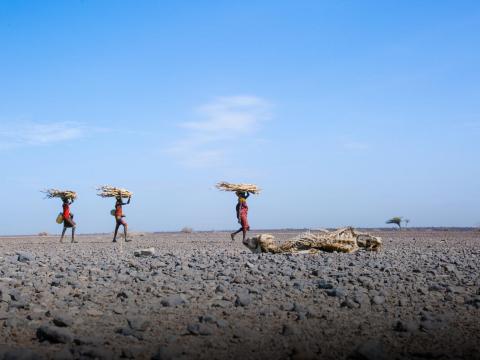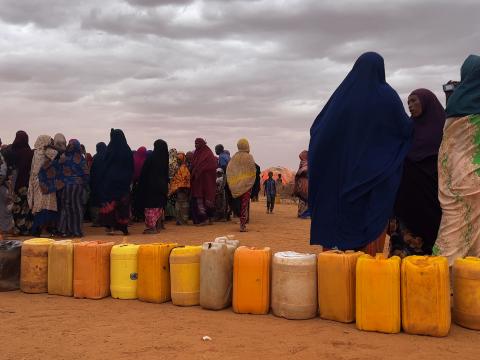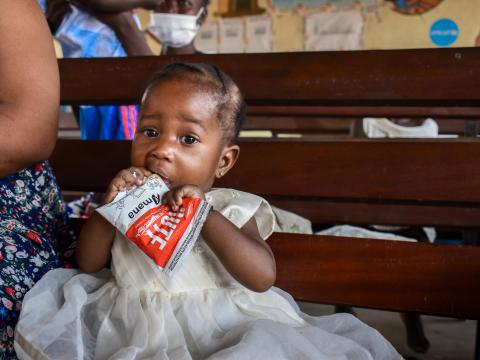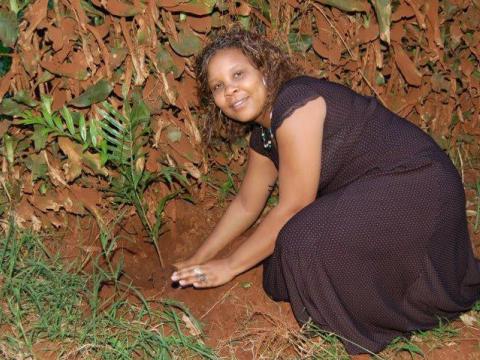
The Global Food Crisis: What if this is what the end of the world looks like?
Julian Srodecki asks, does climate change and a global food crisis spell doomsday? And are we too late to stop it?
28 July 2022
In Hollywood movies the End of the World is always a spectacular event that plays out over a couple of hours. Cinematic CGI chaos affecting millions of people means that the viewer feels part of the key moments that ultimately lead to doomsday. I have spent a lot of the past 25 years working on disasters and emergencies. During this time climate change has gone from a hotly disputed topic thought to only affect vulnerable populations on the margins in poor countries, to a ubiquitous threat. Too many people, especially those in the West, repeatedly missed key moments on the climate crisis timeline. And now here we all are, staring at a clear and present climate danger.
If we were facing The End, what would you expect it to look like? A major food crisis for 345 million people across more than 82 countries? According to the World Food Programme this is happening. By 2070, the World Economic forum estimate that 3 billion people or 1/3 of humanity could live in areas too hot for habitation. Perhaps you would also expect people to fight over scarce resources? That's happening too. Environmental pressures are significant drivers of major conflicts in the world’s largest humanitarian disasters in places such as Afghanistan, Syria, Iraq and Yemen. Maybe you'd imagine the end of the world involving natural disasters devastating people's homes and livelihoods. In the past decade, people across Europe, Australia and North America have learned to fear wildfires and worsening natural disasters.

What does this mean for organisations like World Vision? The humanitarian system is overstretched and this year the UN calculated that 46 billion USD is required to meet all the needs. Current UN estimates are that we are 34 billion short [3]. This is larger than the total annual humanitarian spend for 2019. World Vision is responding with its largest ever global humanitarian response that is targeting 25 most at-risk nations with life-saving aid and assistance. These countries are where children are one step away from famine, living with acute malnutrition or facing the threat of civil unrest. You can find out more about World Vision’s Global Hunger Response here. We are also ramping up our climate-related programming including Disaster Risk Reduction, Climate Adaptation and reducing the organisations carbon footprint.

Now people are awake to the climate clock ticking, what can we do as individuals to slow it? In Hollywood every problem, no matter how big or complex can be solved by a man and/or woman running around with a gun. If the end of the world was happening 'Hollywood-style' our two heroes would be involved in car chases, shoot-outs, explosions and possibly romance. Real life is not like that of course. We all need to do our bit to halt the damage to our planet and can't leave it to just a few people--no matter how qualified or powerful they may be. We all need to think about how we use and abuse the resources available to us. David Attenborough, a famous naturalist once said, “Anyone who thinks that you can have infinite growth in a finite environment is either a madman or an economist.”

We all need to learn to consume less and share more with the global poor. A recent article challenged its readers to have a mostly plant-based diet; ditch private vehicles; fly short-haul only once every three years; and fly long haul only once every eight years. The definition of true heroism is facing fear to do something self-sacrificial for others. This kind of self-sacrifice required to tackle the climate crisis will be painful and scary, but all our children’s futures are worth it. Hollywood always demands a few really big sacrificial gestures by a handful of heroes to ensure disaster is avoided. In real life we need everyone to do as much as they can so that the cumulative impact of hundreds of millions of people make a difference. The world’s most vulnerable children really need for each one of us to get involved, change our lifestyles and demand that our politicians act not just for our benefit, but for the benefit for all children on the planet.
Friends, we are in the final few scenes of our disaster movie. Are we courageous and selfless enough to do whatever it takes to change the ending and save the human race?
To learn more about World Vision's response to the global food crisis, click here
To learn more about how our programming is helping children and their families mitigate the impact of the climate crisis, click here
Julian Srodecki is World Vision’s Regional Humanitarian and Emergency Affairs Director.


